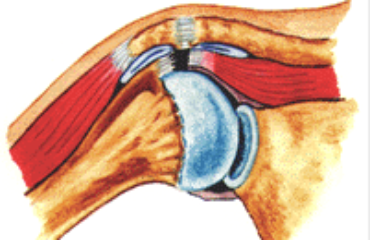Frozen shoulder, also called adhesive capsulitis, causes stiffness and pain in the shoulder. After a while, the shoulder usually becomes very difficult to move. Frozen shoulder occurs in roughly 2 percent of people. Women are more commonly affected than men. It usually affects people in their 40s, 50s, and 60s.
Doctors do not completely understand what causes a frozen shoulder. There does not appear to be any connection to the person’s occupation or arm dominance. A few things might put a person at a higher risk for frozen shoulder. These include:
- Diabetes – Diabetics seem to have a larger occurrence of developing a frozen shoulder, as many as 10 to 20 percent of diabetics have a frozen shoulder for an unknown reason.
- Diseases – There are a few other known medical conditions and diseases that seem to be connected to frozen shoulder these include – cardiac disease, hyperthyroidism, hypothyroidism, and Parkinson’s disease.
- Immobilization – Prolonged immobility causes the condition, either from an injury, surgery, or a fracture.
Effective Treatment Options
Physical Therapy – This is the best treatment option for a frozen shoulder, but it does take several months before you see progress. The exercise program increases your range of motion in the shoulder joint. You will also need to minimize the amount of muscle loss in the affected areas by doing strengthening exercises. Additionally, it is important to stretch, as this is the key to helping rid yourself of a frozen shoulder.
Heat Therapy – One thing a person needs to do is apply heat to the frozen shoulder area to loosen the joint. This helps with pain and stiffness. It is easy to apply heat to the frozen shoulder. Simply apply a warm washcloth for about ten minutes to the affected shoulder. If the pain is very severe, a heating pad can be placed on the shoulder for about half an hour.
Medication – A person can use inflammatory medication to relieve the pain of frozen shoulder. One medication used for frozen shoulder treatment is injections of Cortisone. Cortisone helps to decrease the inflammation and relieve pain. It is possible to cure frozen shoulder with medication and therapy. It takes several months before improvement is seen, but many people prefer this to surgery.
– A person can use inflammatory medication to relieve the pain of frozen shoulder. One medication used for frozen shoulder treatment is injections of Cortisone. Cortisone helps to decrease the inflammation and relieve pain. It is possible to cure frozen shoulder with medication and therapy. It takes several months before improvement is seen, but many people prefer this to surgery.
Shoulder Manipulation – A manipulation of the shoulder is performed when you are under sedation or anesthesia. The doctor moves the arm to break up the adhesions caused by frozen shoulder. This manipulation does not require incision or surgical tools.
Surgery – When other treatment options fail, surgery is often considered. An arthroscopy with a Phoenix orthopedic surgeon is a minimally invasive surgery that involves an arthroscope inserted into the joint. The tight soft tissues in the shoulder joint can be loosened or severed with the arthroscopic instruments, allowing increased range of motion right away.


